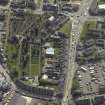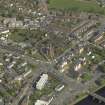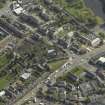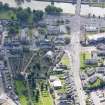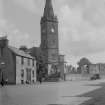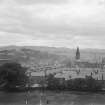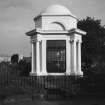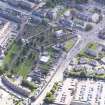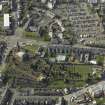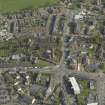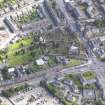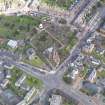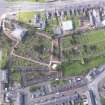Scheduled Maintenance
Please be advised that this website will undergo scheduled maintenance on the following dates: •
Tuesday 3rd December 11:00-15:00
During these times, some services may be temporarily unavailable. We apologise for any inconvenience this may cause.
Dumfries, St Michael's Street, St Michael's Church
Church (18th Century)
Site Name Dumfries, St Michael's Street, St Michael's Church
Classification Church (18th Century)
Alternative Name(s) Site Of Old St Michael's Church
Canmore ID 65541
Site Number NX97NE 18
NGR NX 97552 75692
Datum OSGB36 - NGR
Permalink http://canmore.org.uk/site/65541
- Council Dumfries And Galloway
- Parish Dumfries
- Former Region Dumfries And Galloway
- Former District Nithsdale
- Former County Dumfries-shire
NX97NE 18.00 NX 97552 75692 St Michael's Church
NX97NE 18.01 NX 9751 7569 War Memorials
NX97NE 18.02 NX 97545 75699 Churchyard
See also:
NX97NE 165 St Michaels Chuchyard, Burns Mausoleum
(NX 9751 7569) St Michael's Church (NAT)
Site of Old St Michael's Church (NR)
OS 1:1056 map (1852)
The first mention of a church at Dumfries is in William the Lion's grant of 1179 x 1185 to Bishop Jocelin of Glasgow (G W S Barrow 1971). The pre-Reformation church, dedicated to St Michael, was cruciform in shape with no galleries and an alter facing east. It is alleged (J Paton 1904) that St Michael's underwent alterations after the slaying of John Comyn in the church of the Greyfriars. The introduction of Protestant worship brought more alterations, including the addition of a north wing and making the church square in shape.
Only the medieval nave and chancel were standing in the early 18th century; they were pulled down in 1744, and a new church built on the site by 1746; this church was renovated in 1869 and 1881.
SBS Dumfries 1977; G Hay 1957
Photographic Survey (1900 - 1930)
Photographs by A Brown & Co of sites across Scotland c1900-1930
Photographic Survey (November 1964)
Photographic survey by the Scottish National Buildings Record/Ministry of Work in November 1964.
Publication Account (1977)
The first mention of a church at Dumfries is in William the Lion's. Grant of 1179 x 1185 to Bishop Jocelin of Glasgow (Barrow, 1971, 264). The pre-Reformation church, dedicated to St. Michael, was cruciform in shape with no galleries and an altar facing east. It is alleged that St. Michael's underwent alterations after the slaying of John Comyn in the church of the Greyfriars (Paton, 1904, 11). The introduction of Protestant worship brought more alterations to the church, including the addition of a north wing and making the church square in shape to accommodate a larger number of parishioners (Paton, 1904, 12). Only the medieval nave and chancel were standing in the early eighteenth century when the weak condition of the church began to cause alarm. St. Michael's was pulled down in 1744 and was rebuilt by 1746. A second church, the New Church, was erected in 1727 at the head of High Street. Its successor, built in 1868, has been known as 'Greyfriars'.
Information from ‘Historic Dumfries: The Archaeological Implications of Development’ (1977).
Publication Account (1986)
Large and dominant, this Georgian hall church with its Gothic-like spire occupies the site of a medieval burgh church, whose dedication (to St Michael) it inherits. The gatepiers at the entrance to the churchyard are hollow, equipped with halved doors, and served as elders' sentry-boxes. The churchyard itself is well stocked with a variety of funerary monuments, many demonstrating the versatile and tractable qualities of the local red sandstone. Towards the eastern end there is the mausoleum in the form of a rotunda beneath which the remains ofRobert Bums were re-interred in 1815. Nearby, a tall granite obelisk of 1834 marks an area of Covenanters' tombstones, restored in 1873, whose lengthy inscriptions convey the bitter sectarian spirit of the 'Killing Times' in the 17th century.
Information from ‘Exploring Scotland’s Heritage: Dumfries and Galloway’, (1986).







































